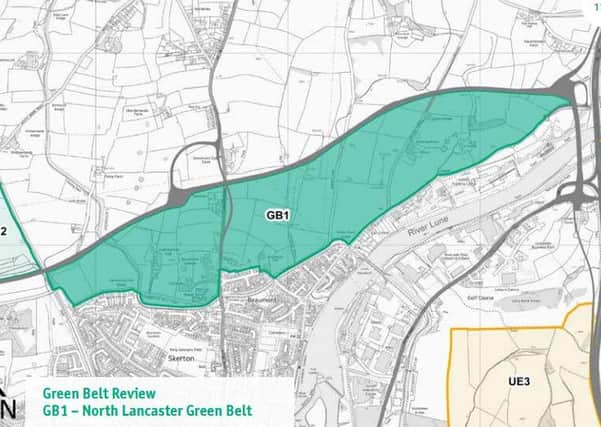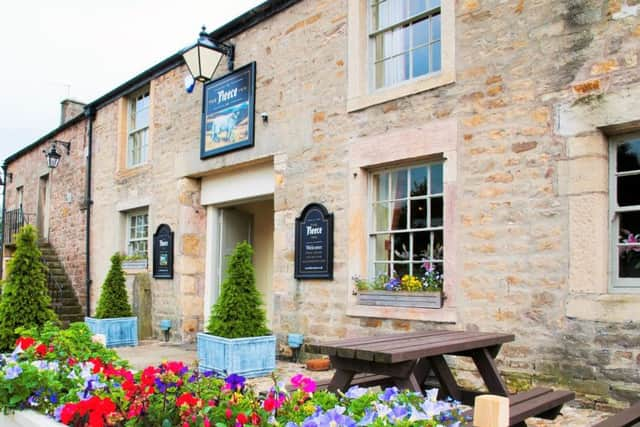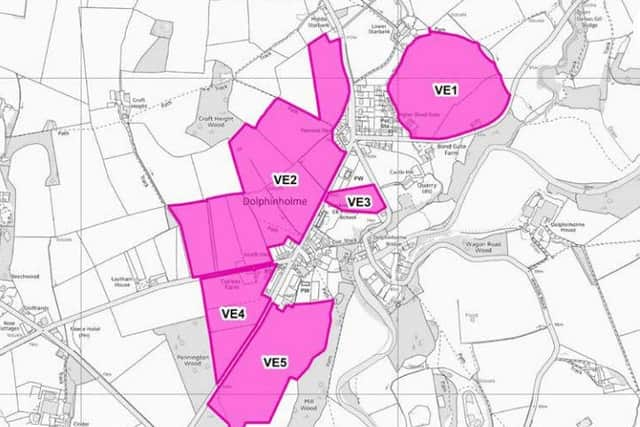Lancaster's neighbourhood plans - are they worth it?


Lancaster City Council will publish its Draft Local Plan in December, with a consultation to start in early 2017.
The plan focusses on a “hybrid development” which includes sites in the north Lancashire greenbelt, much of the land between Scotforth and Galgate, land to the north east of Caton Road around the new M6 junction 34, and agricultural land around the village of Dolphinholme.
Advertisement
Hide AdAdvertisement
Hide AdMany of the district’s parishes have drawn up, or are in the process of drawing up, a Neighbourhood Plan, in the hope of guiding housing development in their areas.


But frustration over the strength and validity of these plans, and the weight they carry in terms of shaping future development, has left a bad taste for many.
The north Lancashire greenbelt has already seen major changes recently with the construction of the new Bay Gateway.
Potential new sites for development in the north Lancashire greenbelt include land between Hare Runs, Halton Road and the new link road (850 new homes), land east of Torrisholme Barrow (750 homes), land south of Carnforth (1,250 homes), and land west of the A6 at Hest Bank (500 homes).
Advertisement
Hide AdAdvertisement
Hide AdResidents in the village of Halton say they have “given up” on their hopes of shaping future housing development locally.


Brian Jefferson, from Halton Parish Council said: “Halton has essentially given up on the Plan having started well, but Parish Council know that no one in the village has any faith in the strength of the Local Plan concept, or faith in our local planning department to support our Parish aspirations.
“The draft housing plan which is about to be circulated, we understand, has entirely ignored all of our observations and is going to include all the entire green belt north of the city and within the Bay Gateway, proposed in the consultation last year.
“That fact, and the outline approval on the fields east of the village, given to a plot not even in the designated draft plan, has just meant we have all lost confidence in the local authority team who clearly do not believe in listening to the local voice,” added Mr Jefferson.
Advertisement
Hide AdAdvertisement
Hide AdResidents in Slyne-with-Hest say their Neighbourhood Plan is meaningless, and that it can be “bulldozed” by the city council’s Local Plan.


A spokesperson for Slyne-with-Hest Neighbourhood Plan Steering Group said that a Local Plan based on figures generated by a “corporate company” should not override the needs of local people.
They were referring to the Turley Report, which estimated that 12,200 new homes would need to be built across the district by 2031 to cope with an increase in population.
The Office for National Statistics (ONS) released data in 2014 however suggesting that only half this amount would be needed, as new figures project a population growth of less than half of that previously thought.
Advertisement
Hide AdAdvertisement
Hide AdThe figures showed that population in the district is expected to grow by 8,400 by 2031, rather than 17,000.


In the end Lancaster City Council stuck with the Turley recommendations.
The spokesperson for Slyne-with-Hest said: “The development needs are those identified by local people and not figures identified by a council’s use of a corporate company such as Turley.
“A Neighbourhood Plan positively seeking to identify sites for residential development on a scale of need identified by consultation with local residents is the plan that should govern future development in the local area.”
Advertisement
Hide AdAdvertisement
Hide AdA consultation carried out by Lancaster City Council in 2014 found that only 12 per cent of 419 people questioned supported the housing figure recommended by Turley Associates.
In Caton-with Littledale, residents say it took a while to get started on a plan because they had “very real concerns about whether the enormous amount of work required would provide the kind of protection that people hoped”.
Jenny Walmsley, chair of Caton-with-Littledale Parish Council, which is part of the Forest of Bowland Area of Outstanding Natural Beauty (AONB) said: “We have decided to press ahead with the plan, and we’re working with a firm of consultants called Kirkwells who are giving us planning advice, and we have a steering group running the project which includes local residents and councillors.”


She said a survey would go out to residents in December, with a programme of consultations with local groups including school children, youth groups and residents groups covering all ages in the village.
Advertisement
Hide AdAdvertisement
Hide AdShe added: “To help with the process, we’re also collecting pictures of people’s favourite views across the parish, so we can highlight the important heritage of the parish, and we’d value any submissions to that.”
Lancaster City Council aims to have its Local Plan adopted in September 2018.
A link to the proposed sites can be found at www.lancaster.gov.uk/planning/planning-policy/land-allocations-dpd.
John Entwistle, co-chair of Dolphinholme Plan Sub Committee, which is a sub committee of Ellel Parish council, Nether Wyresdale Parish Council and Dolphinholme Residents Association, said the group hoped to have a Neighbourhood Plan written by Easter 2017.
Advertisement
Hide AdAdvertisement
Hide AdThe Housing Allocation plans of Lancaster District in 2015 proposed an extra 600 houses in Dolphinholme, a village which currently has 120 houses in its core area.
He said: “The government and the council want development, specifically extra housing.
“We are willing to contribute to this but not to the extent that the village is destroyed and turned into a suburb or a series of large housing estates.
“We are putting together a development plan, not a “no development plan”.
Advertisement
Hide AdAdvertisement
Hide AdMr Entwistle said that if the community didn’t develop a plan, the respective councils “will override us and produce a plan themselves for our area”.
He added: “The planning department for Lancaster aim to have a fully developed Local Plan submitted to the government by the autumn of 2017.
“This is our opportunity to influence what happens in the village over the next 25 years plus.
“The village has grown slowly with small scale developments over many years and we see no reason why this may not continue.”
Advertisement
Hide AdAdvertisement
Hide AdCoun Janice Hanson, cabinet member with responsibility for planning and regeneration, said: “To date the council has received eight neighbourhood area designation applications. Six have been approved - Wray, Caton, Cockerham, Halton, Slyne and Morecambe and the remaining applications from Wennington and Dolphinholme are still out for consultation.
“The city council has yet to receive a neighbourhood plan arising from any of these applications.
“The new power for town and parish councils to produce Neighbourhood plans was granted under the Localism Act 2011 to give communities the opportunity to decide where new development should be and what it should look like in their area eg new homes, shops and offices. “Plans must be in line with the District’s Local Plan...” is subject to an independent examination and community referendum. If approved, a neighbourhood plan will become part of the statutory development plan for the area with the local plan and used to help make decisions on planning applications.”